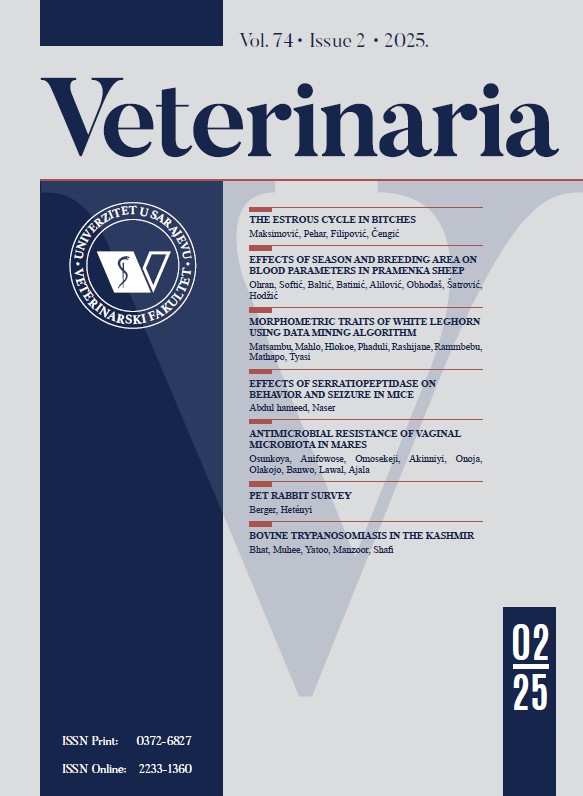Relationships between some fertility and milk production characteristics in Holstein Friesian cattle
DOI:
https://doi.org/10.51607/22331360.2025.74.2.204Keywords:
Calving interval, insemination frequency, lactation milk yield, persistency indices, reproductive efficiencyAbstract
This study investigated the relationships between key fertility and milk production traits in 582 Holstein Friesian cows over a five-year period on a commercial farm in Malkara, Thrace. A total of 1,305 lactation and reproductive records were screened for consistency, with invalid entries excluded. Milk yield parameters -lactation duration; total and standardized 305-day yield; dry period; peak production day; and peak yield- were recorded alongside fertility metrics including age at first insemination, age at first conception and calving, calving interval, inseminations per conception, days open, and parity. Traits were categorized according to lactation number, calving year and season, and production level (Tables 1–2). Persistency indices (P2:1, P3:1, P3:2) were calculated for the 0–100, 100–200, and 200–300 day intervals using established formulas. Statistical analyses employed General Linear Models (GLM) to estimate least squares means and Duncan’s multiple range test for subgroup comparisons. Pearson correlation and simple regression assessed trait interdependencies, assuming no significant factor interactions. Results demonstrated that cows averaged 2.29 inseminations per conception and exhibited a mean calving interval of 395.06 days (range 337.53–508.40 days). Lactation milk yield averaged 8,508.84 kg (range 5,942.46–13,037.57 kg). Analysis of variance revealed that calving interval, lactation duration, age at first calving, days open, and insemination number all had highly significant effects on milk yield (P<0.001), with parity significant at P<0.01. The strongest correlations with milk yield were lactation duration (r = 0.783) and calving interval (r = 0.649), whereas peak day and age at first calving showed negligible associations. These findings underscore the intertwined nature of reproductive efficiency and milk production, highlighting the need for integrated genetic and management strategies to optimize herd performance and sustainability.

Downloads
Published
How to Cite
Issue
Section
License
Copyright (c) 2025 Konçe S. Çağatay , Nurşen Öztürk, Kılıç H. İbrahim , Babakıray Tilbe, Tırlı Zeynep, Koçak Ömür, Güneş Halil

This work is licensed under a Creative Commons Attribution 4.0 International License.







